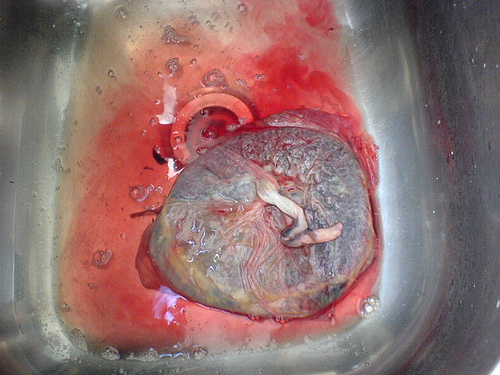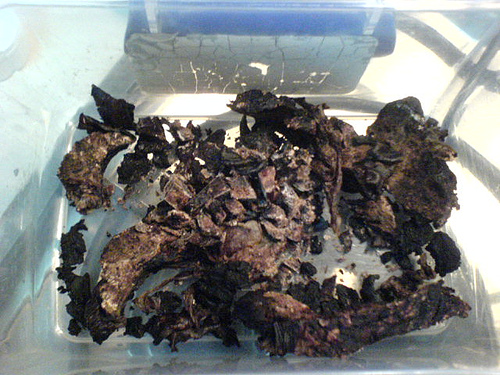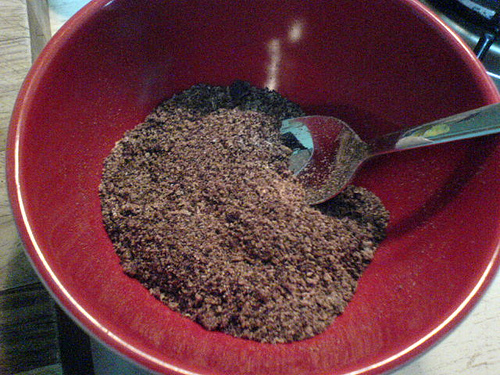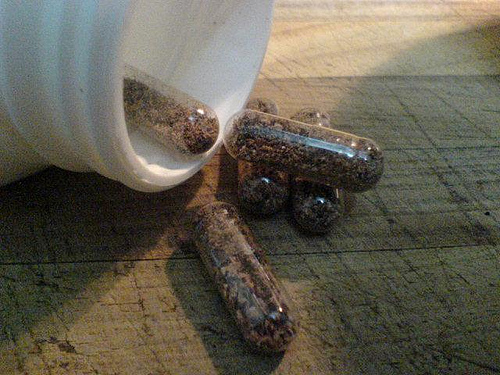
You may have heard of placentophagia (or eating the placenta) thanks to celebrities like Tom Cruise, who in 2006 reportedly planned to consume his partner Katie Holmes' placenta, and more recently, January Jones, who told People that she took vitamins and placenta capsules after giving birth to give her energy. What’s the reason for this trend and why on earth would anyone choose to eat their own placenta? We’re going to tell you everything you need to know about the benefits of “eating your own placenta” and provide you with instructions on how to make placenta capsules.
Benefits of Placenta Encapsulation
The concept of eating the placenta may sound a bit far-fetched, but if you look at the animal world you’ll realize that it’s actually not that bizarre. When a woman gives birth and delivers the placenta, she loses all the nutrients contained in the placenta. By eating the placenta, she is able to replace the nutrients that she lost. The placenta is rich in hormones, protein, vitamins, and hemoglobin (which is an iron-rich protein).
Some benefits of consuming the placenta include:
- helps prevent postpartum depression
- improves breast milk supply
- boosts postpartum energy levels
- shrinks the uterus
- may prevent postpartum hemorrhage and decrease postpartum bleeding
- may prevent iron deficiency anemia
Placenta Encapsulation Instructions
One of the easiest ways to have your placenta encapsulated is to find a placenta service provider. Many doulas provide this service as part of their postpartum care. If you would prefer to do it yourself, we have provided instructions below. However, keep in mind that placenta service providers are usually trained in Traditional Chinese Medicine and are able to add specific herbs and nutrients to meet your specific postpartum needs.
Supplies needed:
- Sealed Container or gallon sized Ziploc bags (double bagged) to store placenta in
- Gloves
- Knife
- Cutting board
- Steamer
- Dehydrator
- Food processor or coffee grinder
- Funnel
- About 150 gelatin capsules
- Fresh ginger (1 piece about an inch in size, sliced)
- Lemon (1/2 to 1 lemon, sliced)
 1. Once the placenta is delivered, have your health care provider place the placenta in a sealed container and store it in the refrigerator. If you will not be able to start the encapsulation process within 24-48 hours after delivery, the placenta should be frozen instead. If it is frozen, it will need to be completely thawed before you start the encapsulation process.
1. Once the placenta is delivered, have your health care provider place the placenta in a sealed container and store it in the refrigerator. If you will not be able to start the encapsulation process within 24-48 hours after delivery, the placenta should be frozen instead. If it is frozen, it will need to be completely thawed before you start the encapsulation process.
2. Once you are ready to start the encapsulation process, take the placenta from the refrigerator and rinse it with cold water in the sink. Try to remove any extra blood and clots. Cut off the umbilical cord and remove the amniotic sac. (A lot of moms like to make keepsakes out of the umbilical cord.)
 3. Steam the placenta in a steamer on the stove. Place the placenta inside your steamer’s basket over water. Add fresh ginger and lemon slices. Then steam on low heat for about 15 minutes. Flip it over and steam for another 15 minutes. You’ll know when it is cooked enough by poking it with a fork. When no juices come out, you’re ready for the next step.
3. Steam the placenta in a steamer on the stove. Place the placenta inside your steamer’s basket over water. Add fresh ginger and lemon slices. Then steam on low heat for about 15 minutes. Flip it over and steam for another 15 minutes. You’ll know when it is cooked enough by poking it with a fork. When no juices come out, you’re ready for the next step.
4. Once the placenta is steamed, remove it from the steamer. Discard the ginger and lemon. Then take the fully cooked placenta over to your cutting board and slice it into thin strips (the thinner you slice it, the faster it will dehydrate).
 5. Prepare your dehydrator by lining it with wax paper or parchment paper. Place the sliced placenta in your dehydrator for about 6-8 hours. Alternatively, you can bake the placenta in the oven on a cookie sheet to dehydrate. Turn your oven to the lowest temp and bake for around 6 to 8 hours or until thoroughly dried, like jerky.
5. Prepare your dehydrator by lining it with wax paper or parchment paper. Place the sliced placenta in your dehydrator for about 6-8 hours. Alternatively, you can bake the placenta in the oven on a cookie sheet to dehydrate. Turn your oven to the lowest temp and bake for around 6 to 8 hours or until thoroughly dried, like jerky.
 6. Once the placenta is dried, it’s ready to be ground up and placed into capsules. Break the placenta strips into small pieces and place them in your food processor. Grind everything into a coarse powder.
6. Once the placenta is dried, it’s ready to be ground up and placed into capsules. Break the placenta strips into small pieces and place them in your food processor. Grind everything into a coarse powder.
7. Use your funnel to fill the gelatin capsules. Should yield around 60-150 capsules.
